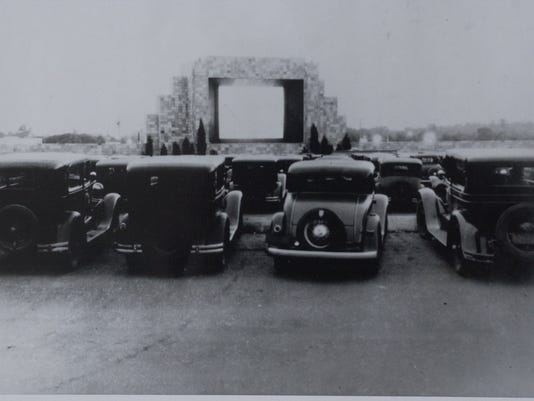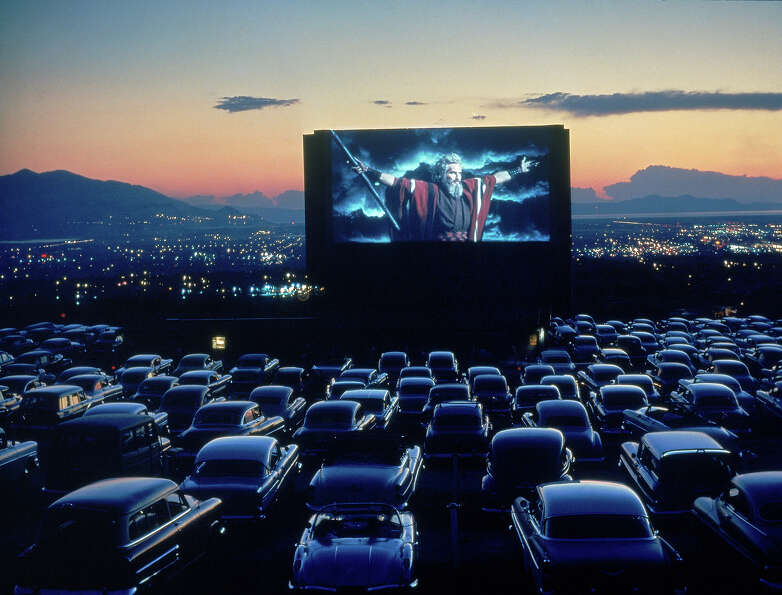
gannett-cdn.com
Richard Hollingshead Jr. loved two things: cars and movies. One day, in his driveway in Camden, New Jersey, he parked his car, positioned a Kodak projector on the hood, nailed a screen to two trees in the backyard, and rolled the film. It was the first drive-in.
With $30,000, Mr. Hollingshead opened America's first drive-in on June 6, 1933. The first film to be played was "Wife Beware". One advertisement announced: "The whole family is welcome, regardless of how noisy the children are." Just as the children could not be heard in the cars' backseats, the movie could not be heard by the occupants of the cars in the back rows. The location of the speakers was at the front on a pole beside the giant screen. But the neighbours adjacent to the drive-in could hear the movie whether they wanted to or not. The noise problem was fixed two years later with the installation of rows of speakers, each beside a car.
Entrance to the drive-in was cheap: 25 cents per car and 25 cents for each occupant of the car. Families came out in droves to see the new source of entertainment. More drive-ins sprouted up across the United States in 1934: Orefield, Pennsylvania in April, Galveston, Texas in July and Los Angeles, California in September.

At its peak, 4000 drive-ins decorated the American landscape. With stiff competition, drive-in owners brainstormed for ways to attract customers: some offered small petting zoos or cages with monkeys; some had small runways where planes could taxi in and pilots could enjoy the show; some had musical groups perform before the show; some featured personal appearances by actors who appeared in that night's film; some offered religious services on Sunday; some offered "buck nights" at $1 per car. The smallest drive-in, located in Harmony Pennsylvania, only held 50 cars. The largest drive-in, in Long Island New York, at 29 acres, held 2500 vehicles. It featured a full service restaurant with seating on the roof to watch the show along with a shuttle to and from a playground for the kids.

Charlton Heston parts the Red Sea in "The Ten Commandments" at a Utah Drive-In circa 1958 courtesy www.sfgate.com.
Drive-in popularity peaked in the 1950's and the early 1960's, coinciding with the peak in popularity of automobiles. "American Graffiti", a story set in 1962, was a coming of age film featuring fast cars. Premiering in 1973, it featured Ron Howard and Harrison Ford and became a sleeper hit. Just as "American Graffiti" was full of teenagers, many of the cars at the drive-in were full of teenagers. The drive-in was dubbed "the passion pit" as it became the place to go on a date.

"American Graffiti" still courtesy www.oocities.org.
The 1970's was the decade that I started going to the drive-in. I remember my two older sisters and I as kids going to the Starlite Drive-In outside of Grand Bend. We would don our pajamas, climb into the back of our wood-panelled station wagon and head to the drive-in. After playing on the swingset under the big screen, we would buy some popcorn at the snack bar and then sit back and enjoy the show.
But with the invention of colour television and the VCR, families started staying home to watch movies by the 1980's. Businessmen could no longer afford to purchase large amounts of land to build drive-ins due to escalating real estate prices. Drive-in owners couldn't afford the taxes. Slowly, drive-ins started to disappear. The drive-in at the end of our street in Hamilton closed in 1985, was torn down and replaced by a new survey (sadly, we never visited it since it was literally in our own backyard).
But the statistics didn't stop my son Thomas and his Youth Group from watching a movie last night under the stars. They sat in the pastor's backyard and watched a Will Smith movie. Their equipment? A large tarp and an old movie projector. What worked for Richard Hollingsford 80 years ago still works for Pastor Ken today.
As of 2013, the United States has only 366 drive-ins. While at its peak, 25% of movie screens were drive-ins, that figure has now dropped to 1.5%.
But the statistics didn't stop my son Thomas and his Youth Group from watching a movie last night under the stars. They sat in the pastor's backyard and watched a Will Smith movie. Their equipment? A large tarp and an old movie projector. What worked for Richard Hollingsford 80 years ago still works for Pastor Ken today.
The drive-in...it was fun while it lasted.
No comments:
Post a Comment